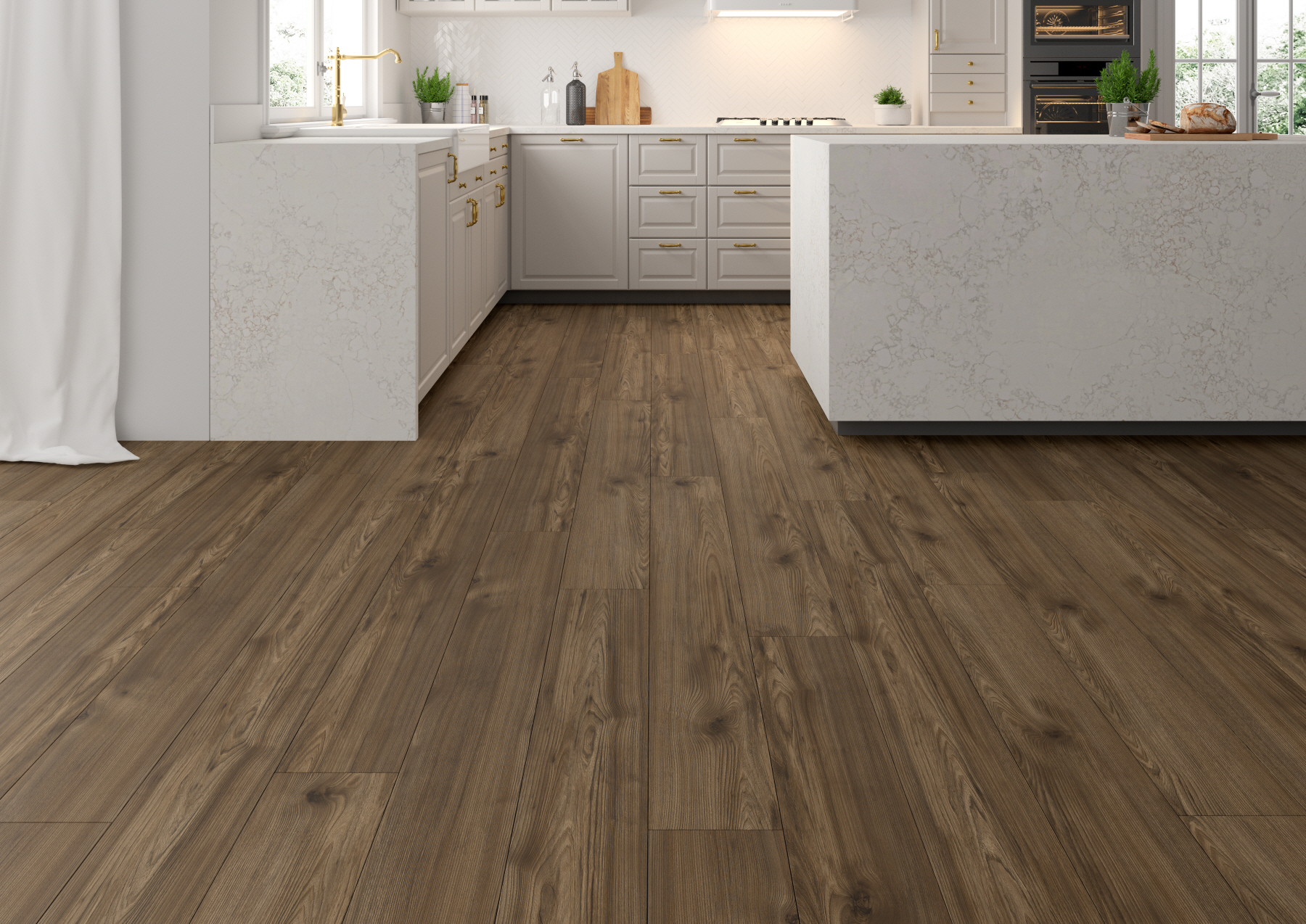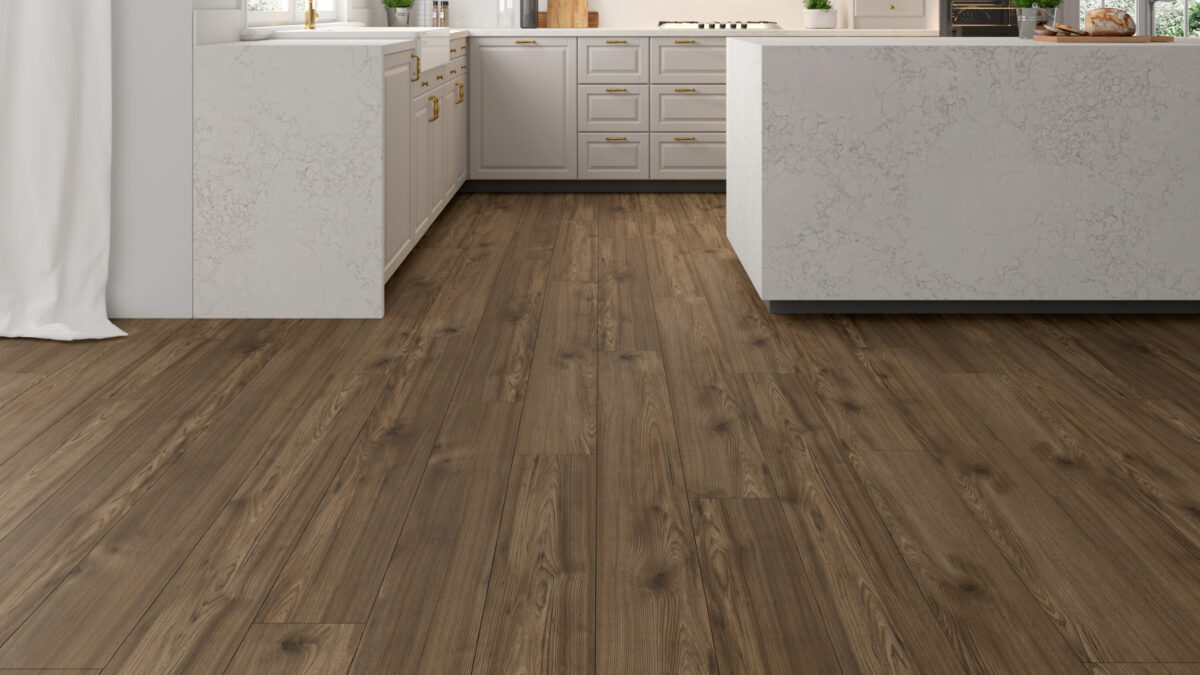
Luxury vinyl plank (LVP) and hardwood flooring are both excellent choices, each with its own set of advantages. Whether you prioritize durability, aesthetics, or investment value, both options have something to offer. In this article, we’ll explore the pros and cons of each to assist you in deciding which flooring option is most suitable for your renovation project.
What is luxury vinyl plank (LVP)?
LVP is crafted from multiple layers, typically including a core structure made of vinyl, plastic, or fiberglass, a 3D photo layer, and a clear protective vinyl layer. Renowned for its ability to mimic the appearance of hardwood, LVP stands out for its exceptional durability, boasting waterproof, scratch-resistant, and stain-resistant properties.
Luxury vinyl plank vs. hardwood flooring
- Cost
Hardwood flooring often comes with a higher price tag compared to LVP, typically ranging from $8 to $25 per square foot, including installation. The cost varies depending on factors such as the wood species chosen, with common varieties like pine being more affordable than exotic options like maple. Additionally, hardwood requires sealing every seven to ten years, which can contribute to increased maintenance expenses over time.
On the other hand, LVP is generally more budget-friendly, ranging from $2 to $7 per square foot, including installation. With LVP, you have the flexibility to emulate the appearance of various wood species, allowing you to achieve a luxurious look at a more economical price point.
- Look and Texture
Hardwood flooring is often chosen for its exquisite visual appeal, offering a diverse range of wood types including light, dark, bleached, and reclaimed woods, each imparting a distinct ambiance to any space. With knots, patterns, and grains sourced directly from trees, every hardwood floor boasts a unique character. Typically spanning up to seven feet in length, hardwood planks add elegance to any room.
In contrast, LVP utilizes 3D photo printing technology to replicate the look of hardwood with remarkable realism. This allows for the creation of easily replicable patterns with precise colors, textures, and patterns to complement your space. LVP planks typically measure around four feet in length.
- Water tolerance
When it comes to water tolerance, LVP consistently outperforms hardwood. LVP boasts complete resistance to moisture damage, remaining impervious to staining, warping, or wear caused by water exposure. This makes it an ideal choice for areas with high moisture levels such as bathrooms, kitchens, and laundry rooms, providing assurance that your flooring will maintain its integrity over time.
Conversely, hardwood flooring is highly vulnerable to water damage due to its porous nature. Wood readily absorbs moisture, making even minor water spills a potential cause for staining or buckling. Maintaining dry conditions is crucial for preserving the quality of hardwood floors in the long run.
- Durability and maintenance
Vinyl flooring offers easy maintenance as one of its standout features, boasting high resistance to scratches, dents, and stains. Regular sweeping and mopping with standard household cleaning products are all it takes to keep your LVP looking pristine. Should any planks become damaged, the convenience of replacing individual planks without the need for a full floor replacement is a notable advantage.
Maintaining a hardwood floor requires some additional considerations. When mopping, it’s essential to use cleaning supplies specifically formulated for wood to avoid inadvertently causing moisture damage. Additionally, be mindful of potential sources of scratches, such as pet claws, high heels, and furniture. If your hardwood floor begins to show signs of wear, refinishing it can restore its appearance and provide a fresh new look.
- Installation
LVP stands out for its straightforward installation process, making it a top choice for DIY enthusiasts. With options like click-and-lock designs that effortlessly slide into place without the need for adhesives, installing LVP is a breeze. Moreover, many LVP products are compatible with concrete subfloors or can be installed over existing hard flooring, potentially minimizing the need for extensive demolition and removal.
While hardwood flooring installation has traditionally required professional expertise, advancements in manufacturing have simplified the process. Many hardwood products now feature a tongue-and-groove design, akin to LVP, facilitating faster and more accessible installation.

